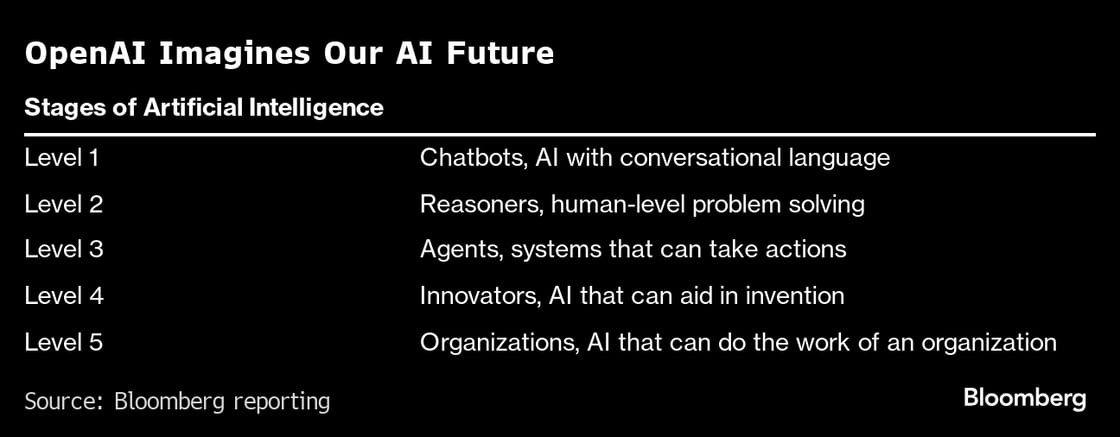Creating an AI-Ready Workforce

In today's rapidly evolving technological landscape, artificial intelligence (AI) is no longer a futuristic concept but a present reality reshaping industries across the globe. As AI continues to transform business operations and decision-making processes, organizations face a critical challenge: developing a workforce that is not only comfortable with AI technologies but also capable of leveraging them to drive innovation and productivity. This blog explores the essential components of creating an AI-ready workforce and provides strategies for organizations to prepare their employees for the AI-driven future.
What is an AI-Ready Workforce
An AI-ready workforce is characterized by individuals who possess the skills, knowledge, and mindset necessary to effectively collaborate with and harness the power of AI technologies in their work environments. This goes beyond mere technical proficiency; it encompasses a holistic set of competencies that enable employees to adapt to changing technological landscapes, think critically about AI applications, and continuously evolve their skills in tandem with AI advancements.
The cornerstone of an AI-ready workforce is a combination of technical acumen, soft skills, and business savvy. On the technical front, employees need to develop a strong foundation in data literacy, understanding how to collect, interpret, and analyze data effectively. This is crucial as AI systems rely heavily on data to function and improve. Additionally, a basic understanding of programming concepts and machine learning fundamentals can greatly enhance an employee's ability to work alongside AI systems, even if they're not directly involved in their development.
However, technical skills alone are insufficient. The AI-ready workforce must also cultivate a set of soft skills that complement their technical knowledge. Critical thinking is paramount, as employees need to be able to evaluate the outputs of AI systems and make informed decisions based on those insights. Problem-solving skills are equally important, allowing workers to identify appropriate AI applications for various business challenges and to troubleshoot issues that may arise.
Adaptability stands out as a crucial trait in the AI era. As AI technologies continue to evolve and reshape job roles, employees must be willing and able to adapt to new workflows and processes. This adaptability goes hand-in-hand with a commitment to continuous learning, as staying relevant in an AI-driven workplace requires ongoing skill development and knowledge acquisition.
From a business perspective, an AI-ready workforce needs to understand how AI initiatives align with broader organizational goals. Strategic thinking becomes essential, as employees must be able to identify opportunities where AI can create value and drive business objectives. Moreover, as AI raises new ethical considerations and potential risks, employees must be equipped to navigate these complex issues, understanding the implications of AI deployment and ensuring responsible use of these powerful technologies.
Strategies for Developing an AI-Ready Workforce
Creating an AI-ready workforce is not a one-time effort but an ongoing process that requires commitment from both organizations and employees. Here are several strategies that companies can employ to foster AI readiness among their staff.
Implement Comprehensive AI Training Programs: Organizations should develop and offer tailored AI training courses that cater to different roles and skill levels within the company. These programs should cover everything from AI fundamentals to advanced applications, ensuring that both technical and non-technical staff can benefit from AI education. By providing a solid foundation in AI concepts and applications, companies can demystify AI and build confidence among their employees.
Offer Personalized Learning Paths: Recognizing that employees have diverse learning needs and preferences, organizations can leverage AI-powered learning platforms to create customized educational experiences. These systems can analyze individual skills, interests, and job requirements to recommend relevant courses and materials, adapting the difficulty level as employees progress. This personalized approach ensures that learning is both efficient and effective, maximizing the impact of training initiatives.
Foster a Culture of Continuous Learning: In the fast-paced world of AI, learning cannot be a one-off event. Organizations need to cultivate an environment that encourages ongoing skills development. This can be achieved by providing access to a variety of AI resources, including online courses, workshops, and industry conferences. Additionally, promoting internal knowledge sharing and creating opportunities for employees to apply their new AI skills to real-world projects can reinforce learning and drive innovation.
Collaborate with AI Experts and Institutions: To stay at the forefront of AI developments, organizations should forge partnerships with universities, AI research centers, and industry leaders. These collaborations can provide employees with access to cutting-edge knowledge and practical insights through guest lectures, mentorship programs, or collaborative projects. Such initiatives not only enhance the skills of the workforce but also keep the organization connected to the latest trends and breakthroughs in AI.
Conduct Regular Skills Assessments and Gap Analyses: To ensure that workforce development efforts are aligned with organizational needs, companies should regularly assess their employees' AI skills and identify any gaps. AI-powered tools can be particularly useful in this regard, providing data-driven insights into skill levels across the organization. This information can inform future training initiatives and help leaders make informed decisions about workforce development and AI integration strategies.
Assessing your workforces AI readiness
Complete the following AI workforce readiness self assessment. Use it to identify areas for improvement and prioritize your AI readiness efforts.
Scoring Guide:
1 - Not considering
2 - Early planning stages
3 - Partially implemented
4 - Well implemented
5 - Advanced implementation
Total your scores to determine your overall AI readiness:
- 0-20: AI Aware - Beginning to explore AI possibilities
- 21-40: AI Starter - Taking initial steps towards AI adoption
- 41-50: AI Ready - Well-positioned to implement AI initiatives
- 51-60: AI Mature - Advanced in AI implementation and usage
| Category | Assessment Questions | Score (1-5) | Tips to Progress |
| Strategy | 1. Do we have a clear AI strategy aligned with business goals? | - Develop a comprehensive AI strategy - Align AI initiatives with overall business objectives - Secure executive buy-in and support |
|
| 2. Have we identified potential AI use cases? | - Conduct workshops to brainstorm AI applications - Prioritize use cases based on business impact and feasibility - Start with pilot projects to demonstrate value |
||
| Infrastructure | 3. Is our IT infrastructure capable of supporting AI initiatives? | - Assess current infrastructure capabilities - Invest in cloud computing resources - Upgrade hardware and software as needed |
|
| 4. Do we have the necessary data storage and processing capabilities? | - Implement data lakes or warehouses - Explore big data technologies - Ensure scalable computing resources |
||
| Data | 5. Do we have access to high-quality, relevant data? | - Conduct a data audit - Implement data governance policies - Improve data collection and cleaning processes |
|
| 6. Is our data properly organized and labeled for AI use? | - Invest in data annotation tools - Develop data cataloging systems - Establish data quality metrics |
||
| Talent | 7. Do we have AI-skilled personnel or access to AI expertise? | - Hire AI specialists or data scientists - Provide AI training for existing staff - Partner with AI consultants or academic institutions |
|
| 8. Is there a plan for continuous AI skill development? | Create an AI learning and development program - Encourage participation in AI conferences and workshops - Establish mentorship programs |
||
| Governance | 9. Do we have AI governance policies in place? | - Develop AI ethics guidelines - Establish an AI oversight committee - Create processes for AI model validation and monitoring |
|
| 10. Are we addressing AI-related ethical and legal considerations? | - Conduct regular AI ethics audits - Stay informed about AI regulations - Implement transparency in AI decision-making |
||
| Culture | 11. Is there organizational readiness to adopt AI? | - Foster a data-driven culture - Communicate AI benefits and impacts to all employees - Encourage experimentation and innovation |
|
| 12. Are we prepared to manage change related to AI adoption? | - Develop a change management strategy - Provide training on working alongside AI - Address concerns about job displacement |
Challenges and Opportunities
While the benefits of creating an AI-ready workforce are clear, the journey is not without its challenges. One of the primary obstacles is the rapid pace of technological change, which can make it difficult for employees to keep up with the latest developments. There may also be resistance to new technologies, particularly among employees who fear that AI might threaten their job security.
However, these challenges are outweighed by the immense opportunities that an AI-ready workforce can unlock. By embracing AI technologies, organizations can dramatically increase productivity, streamline operations, and uncover new avenues for innovation. An AI-ready workforce is better equipped to identify and capitalize on these opportunities, driving business growth and maintaining a competitive edge in an increasingly AI-driven marketplace.
Industry-Specific Applications
The impact of AI readiness varies across industries, each presenting unique opportunities for AI integration. In healthcare, an AI-ready workforce can leverage machine learning algorithms to improve diagnostic accuracy and develop personalized treatment plans. In finance, AI-savvy employees can enhance risk assessment models and automate complex trading strategies. The manufacturing sector can benefit from AI-ready workers who can optimize production processes and predict equipment maintenance needs. Retail businesses can use AI to personalize customer experiences and optimize inventory management. By understanding these industry-specific applications, organizations can tailor their AI readiness efforts to maximize impact in their particular sector.
Future Outlook
As we look to the future, it's clear that the need for AI readiness will only grow. The skills required to work effectively with AI will continue to evolve, demanding a workforce that is not only knowledgeable about current AI technologies but also adaptable to future advancements. Organizations that invest in creating an AI-ready workforce today will be better positioned to navigate the challenges and seize the opportunities of tomorrow's AI-driven world.In conclusion, creating an AI-ready workforce is a critical imperative for organizations aiming to thrive in the digital age. By focusing on developing a blend of technical, soft, and business skills, fostering a culture of continuous learning, and implementing targeted strategies for skill development, companies can build a workforce that is not just prepared for the AI revolution but poised to lead it. As AI continues to reshape the business landscape, the organizations that prioritize AI readiness will be the ones that define the future of work.


